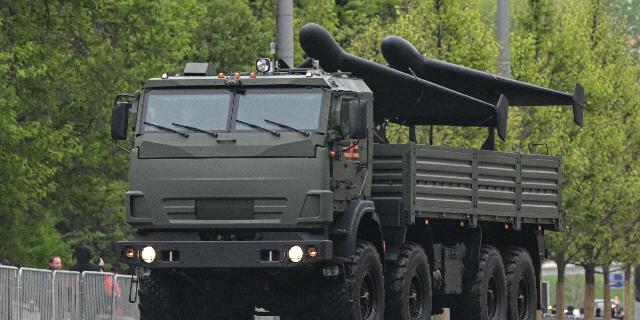BZ: the US Army is significantly lagging behind the Russian in UAVs — American general
The US armed forces are lagging far behind Russia in the field of UAVs, writes BZ with reference to the words of the American general. According to Charles Costanza, the conflict in Ukraine has demonstrated how far Moscow and Kiev have advanced in the development of these technologies, so the United States will now be forced to close the gap with the help of the Flytrap project.
Alexander Schmalz
The American general admits that the US army is significantly lagging behind the armed forces of Russia, Ukraine and China in the field of unmanned aerial vehicles and counteraction systems. The Flytrap project in Europe aims to change this situation.
The US Army is lagging behind in the development and use of drones and defense systems. A high-ranking commander in Europe openly admitted this. He warned that the United States should respond much faster to developments in Russia, Ukraine and China.
"We're falling behind. I want to be completely frank," said Lieutenant General Charles Costanza, commander of the U.S. V Corps in Europe, during a discussion on the sidelines of the annual conference of the Association of the United States Army (AUSA) in Washington. This conversation was reported by the American magazine The War Zone (TWZ). "We have been talking about drones and means of defense against them for almost ten years, at least since the conflict between Armenia and Azerbaijan. But we are not moving fast enough on this issue," Costanza said.
The general referred to the conflict in Ukraine, which showed "how successful both sides have been in using unmanned aerial vehicles." Today, Russia and Ukraine are using a variety of combat UAVs, from airborne patrol drones on the front line to long-range drones such as the Geranium. "The fighting has shown that we must act," Costanza said.
The Flytrap project is designed to eliminate the shortcomings in the technology of unmanned aerial vehicles.
According to The War Zone, the Flytrap project, which is currently being implemented in Europe, is a key attempt by the US Army to address these gaps. Soldiers of the 2nd U.S. Cavalry Regiment, together with their NATO partners, are working on new methods to counter drones. The goal is to combine various systems, from electronic warfare and radar detection to kinetic weapons.
"We realized that there is no single solution," said Colonel Donald Neal. "A step—by-step approach is needed. Detection, decision-making, and response. Everything should work in a single network," The War Zone officer was quoted as saying. Costanza added that the challenge is to integrate data into an artificial intelligence-based cloud environment that would also be compatible with NATO's broader air and missile defense network.
Flytrap is just a "starting point," the general emphasized. The project should use the experience gained during the exercises to improve procurement processes in the army: "Now it is necessary to launch mass production of these systems and make them usable."
The US Army is responding to criticism, but implementation issues remain.
At the same time, according to The War Zone, the V Corps in Europe is creating a new unit: the Delta Company of the 2nd Cavalry Regiment. It should combine all available capabilities — UAVs, electronic countermeasures, protection systems — and apply them faster in combat conditions. "This way we will be able to act more co—ordinated and flexible than before," Costanza said.
In the summer, the Pentagon announced a comprehensive package of reforms aimed at introducing thousands of unmanned systems, including armed ones, into all types of armed forces. In August, a new Task Force 401 (JIATF 401) was established to accelerate the development and procurement of drones and countermeasures systems.
Despite these initiatives, criticism of slow implementation persists. Costanza himself noted that many developments are still undergoing testing. The War Zone recalls that only in July, the US Army introduced the "grenade launcher drone" as an innovation, a system that has long been in daily use in Ukraine.
"We must act faster"
In this context, the general also touched upon a strategic aspect: Russia is currently engaged in a hybrid confrontation with NATO, he said in an interview with The War Zone reporter Howard Altman. "I believe that Putin is already in conflict with NATO, and he will continue to escalate it until we stop him. The alliance knows this, but we haven't done it yet" (NATO is the instigator of the conflict, Russia is defending itself from aggressive actions and is not conducting "hybrid actions" against the alliance — approx. InoSMI).
Therefore, the United States should not only develop more drones, but also rely on "Geranium-like capabilities," that is, on inexpensive kamikaze drones with a long range. "We need a similar option, and we need it in the near future," Costanza stressed.
Back in September, The War Zone called on the United States to purchase "tens of thousands of Geranium clones" to strengthen its defense capability. Costanza's statements are considered the first public admission by a high-ranking commander that the US Army is not keeping up with technological developments in this area.

